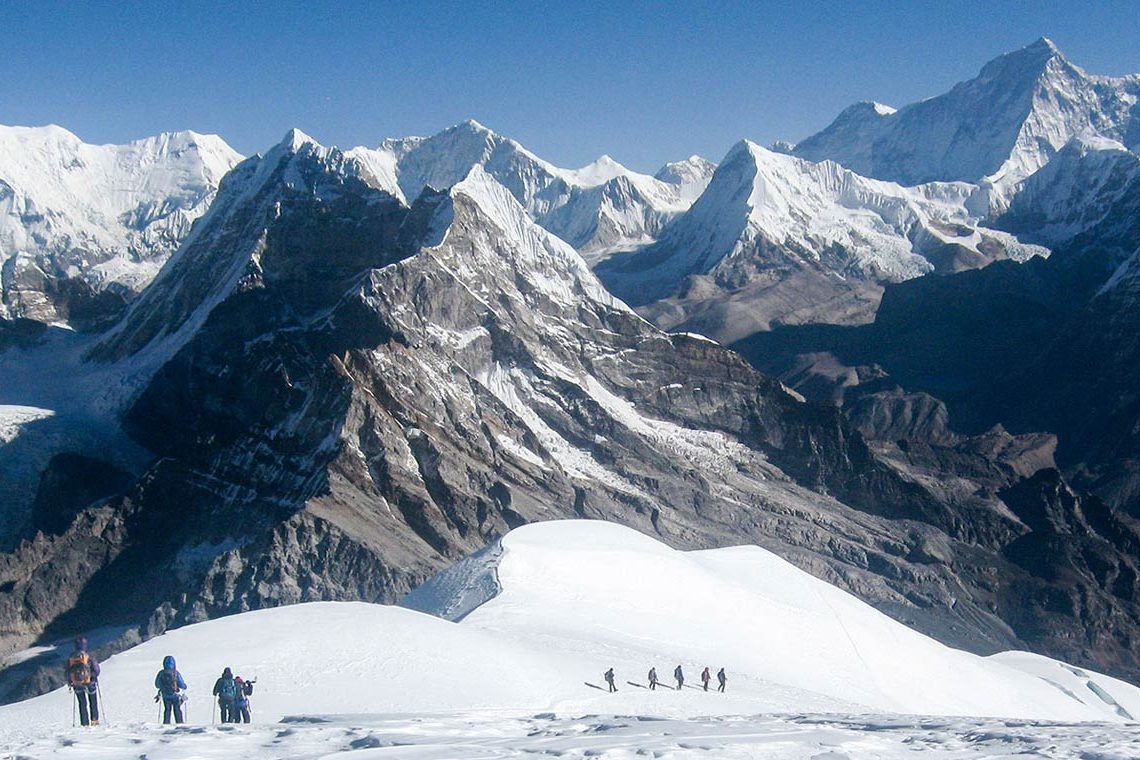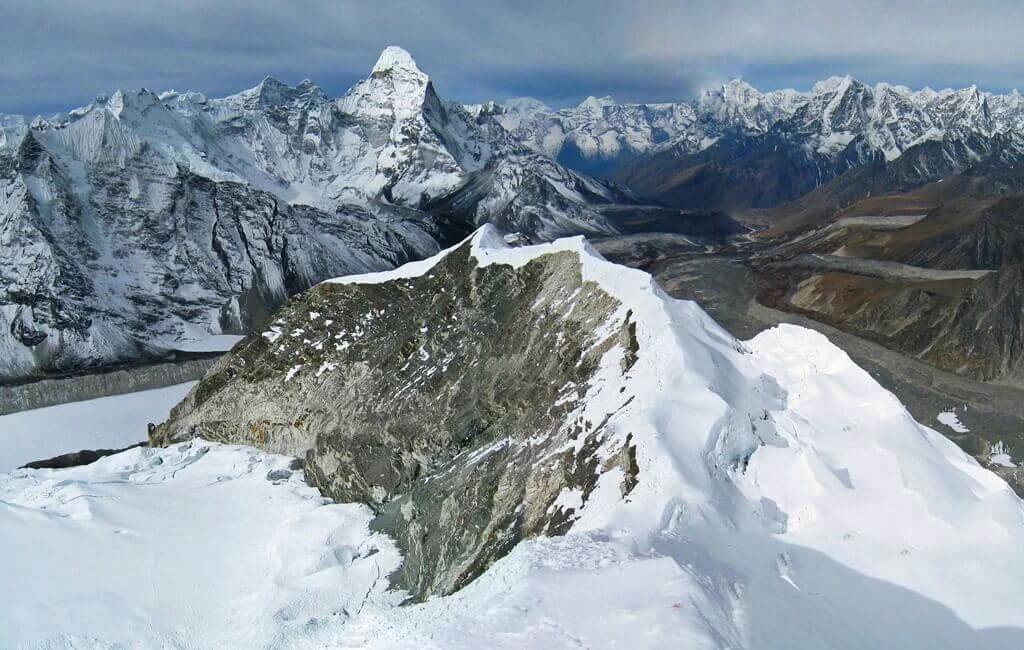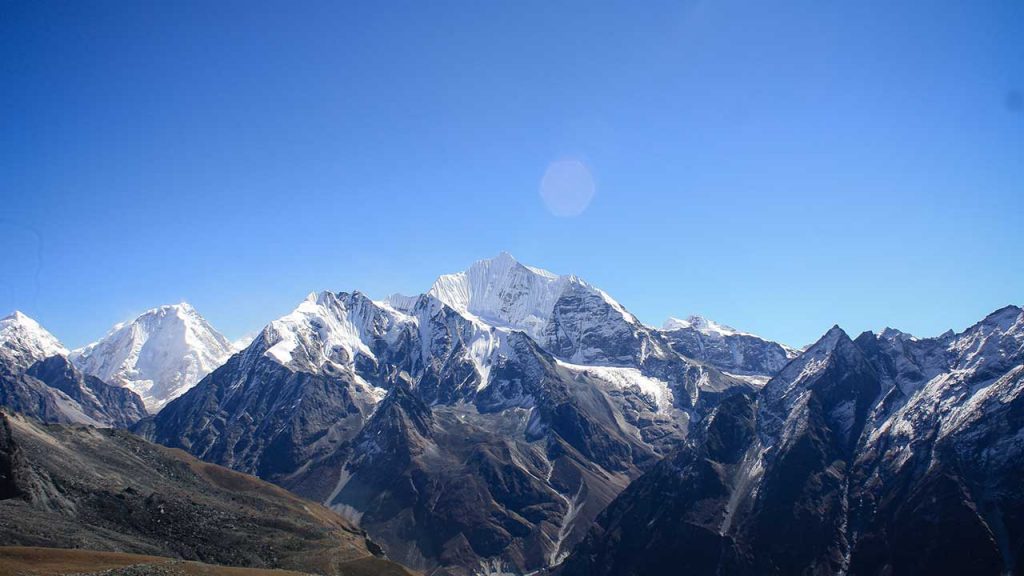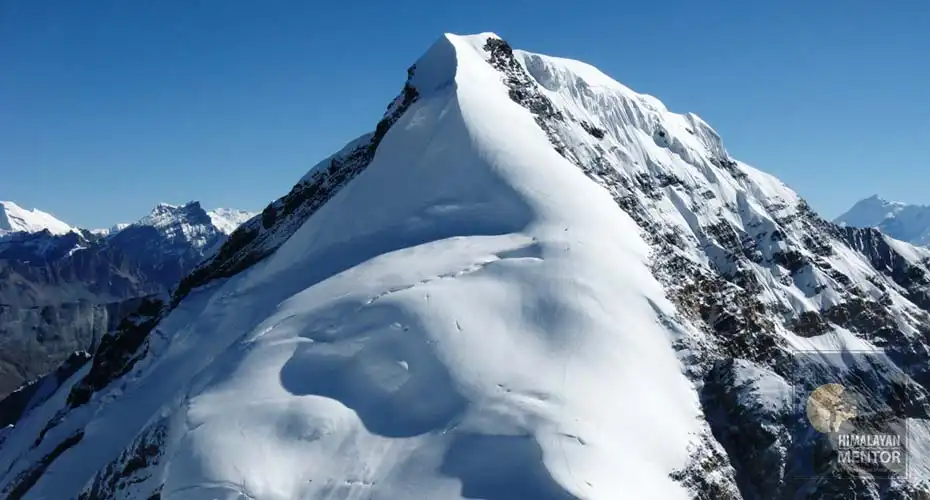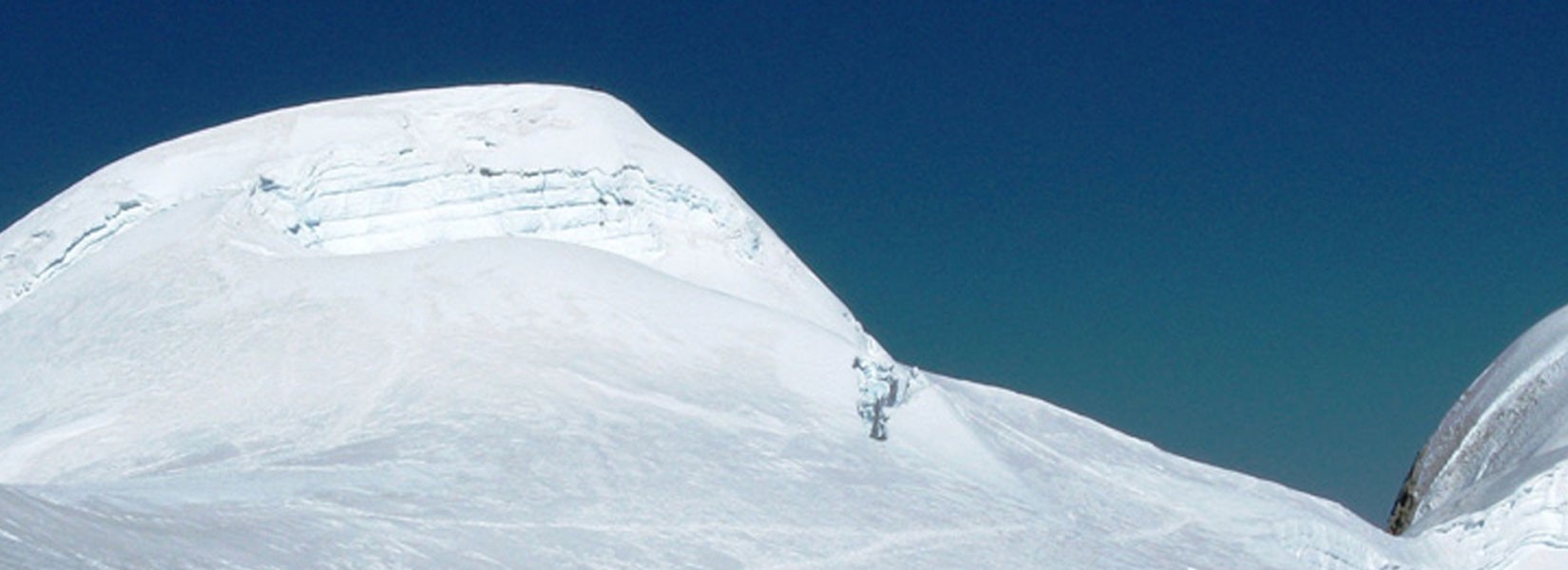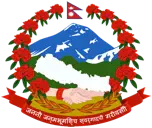Island Peak Climbing 2024 Overview
Also known as ‘Imja Tse’, Island Peak is an impressive peak that is located in the Everest region in Nepal. Named “Island Peak” by Eric Shipton in the year 1953, this stunning wonder actually looks like a serene island surrounded by ice. It can be seen from Dingboche 4110m and is known to offer stunning views of Mt. Nuptse 7879m, Mt. Lhotse 8501m, Lhotse Middle Peak 8410 m and Lhotse Shar 8383m. To the east of Island Peak lies Mt. Makalu 8475m, Mt. Baruntse 7720m and Ama Dablam 6856m, rise majestically in the south himalayan range.
An Island Peak climbing adventure begins with a scenic himalayan mountain flight to Lukla 2880m. Lukla is the gateway to the Khumbu valley and Everest region of Nepal. After landing Lukla, we gather our gears and begin our trek/walks gradually ascending the main Everest Base Camp trail which passes through Phakding 2660m, Namche Bazaar 3440m and Tyangboche 3880m to finally arrive at Dingboche 4410m.
After we continue our trek as we approach the Island Peak Base Camp 4970m. Before attempting the climb to the Island Peak summit, we will do some preparation, making sure that everybody is ready and fit for fight. Soon, we will tackle several technical climbing sections and head towards the summit. Our climb to the summit is rewarded with sensational views of the world’s greatest Everest ranges.
After a successful climb, we follow the same route to descend back to Lukla. Our experience of Island Peak ends with a scenic return flight from Lukla to Kathmandu 30/40 minutes flight.
You can also extend this adventure and combine it with a tour of the Everest Base Camp Trek. Please feel free to make an enquirer for a tailor-made program by nepal guide info team .
Where is Island Peak?
Imja Tse, better known as Island Peak, is a mountain in the Sagarmatha National Park of the Himalayas in eastern Nepal. The peak was named Island Peak in 1953 by members of the British Mount Everest Expedition because from Dingboche it appears like an island in an ocean of ice. Later the peak was renamed Imja Tse in 1983, but Island Peak Climbing remains the most commonly used name. The peak is in fact an extension of the ridge coming down from the southern end of Lhotse Shar closed to Chhukung .
The southwest summit of Imja Tse was first climbed in 1953 as part of a training exercise of a British expedition that went to the summit of Mount Everest. The team that climbed Imja Tse consisted of Tenzing Norgay, Charles Evans, Alfred Gregory, Charles Wylie and seven other Sherpas. The main summit was first climbed in 1956 by Hans-Rudolf von Gunten and two unknown Sherpas, members of a Swiss team that made the second ascent of Everest and the first ascent of Lhotse.
GOOD TO KNOW CANCELLATION
Free cancellation up to 60 days prior departure, after which the deposit becomes non-refundable.
- OTHER PRACTICAL INFORMATION
NOTE:
1. Urgent Notice for Domestic Flights (To/From Lukla)
The Government of Nepal has announced the halt of all flight operations from Kathmandu to Lukla, tentatively. Flights to Lukla have now been re-directed to Manthali airport in the district of Ramechhap which is 132 Km east of Kathmandu until further notice, to avoid the heavy traffic congestion at Kathmandu airport. The airport in Ramechhap physically sits in the Tamakoshi River Valley and is located 132 km from Kathmandu (an approximately 3-4 hours drive).
However, the early morning flight which departs at 6 am in the morning from Kathmandu will be available throughout this period, subject to early bookings at least 6 months to 1 year in advance prior to all Everest trips, which can be tedious in the peak season periods of spring and autumn. This too, is not guaranteed due to inclement weather patterns in these climatic changing times. All other flights after 6 am to Lukla will only be available from the airport in Ramechhap.
Other than this, optionally, helicopter arrangements can be made for 5 people on a sharing basis with an addition of USD 500 for a one way flight per person with an exclusive choice [only yours] to change your airplane flights to the helicopter. We will try to coordinate ways to form groups at the airport for this arrangement, but again, this too cannot be guaranteed, especially in peak season periods. The drive to Ramechhap and flight to Lukla is almost always guaranteed unless the flight is canceled due to bad weather conditions.
Travelers are requested to advise us on your preferred alternatives for flights to/from Lukla if/when possible delays or disruptions occur.
We would truly appreciate your patience to bear with us in the mentioned circumstances above. Climate change and our, should we say, blessed geographical conditions; which can be a monster when least expected, has become the relevant cause for this, making us victims of unseen circumstances beyond our control. Thank you so much for your kind understanding.
Recommended gear: 2024/25 - Waterproof jackets
- Warm fleece jackets, jerseys, pullovers
- Good boots, either light-weight trekking boots or light leather boots
- Sleeping bags (preferably those rated -20 degree Celsius. You can rent them in Kathmandu)
- A comfortable day pack, preferably with a waistband
- Fleece wind-stopper jackets (optional)
- Waterproof (preferably breathable fabric) shell jackets
- Down vests and/or jackets (optional)
- Lightweight gloves
- Heavyweight gloves or mittens with a waterproof shell outer
- Sun hats/scarfs
- Light balaclavas/warm fleece hats
- Sunglasses with UV protection
- T-shirts
- Underwear
- Hiking shorts
- Lightweight cotton long pants
- Light, expedition-weight thermal bottoms
- Fleece or woolen pants
- Waterproof (preferably breathable fabric) shell pants
- Thin, lightweight inner socks
- Thick, warm wool hiking socks
- Hiking boots with spare laces
- Camp shoes (sneakers and/or sandals)
- Other necessary equipment:
- Headlamps (e.g. Petzl Zoom) with spare bulbs and batteries
- Small pad or combination lock-to-lock trek bag
- Basic first aid kits (We also provide a comprehensive first aid medical kit and oxymeter to the head guide)
- Large plastic bags to keep items dry inside your trekking bag
- Day packs (approximately 2500 to 3000 cubic inches)
- Water bottles (2 bottles recommended)
- Toiletries


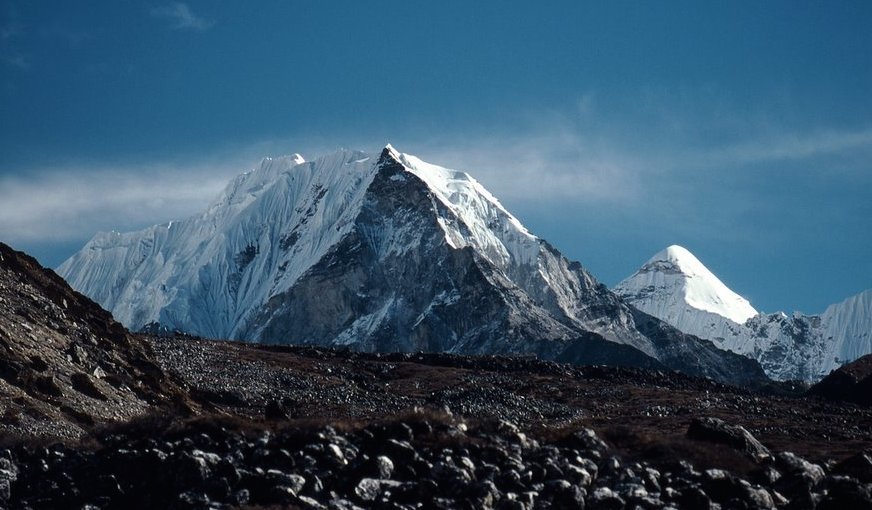
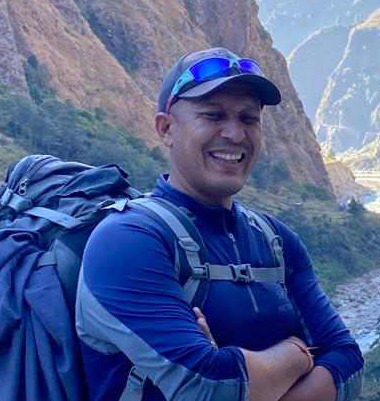 Have Questions?
Have Questions?
